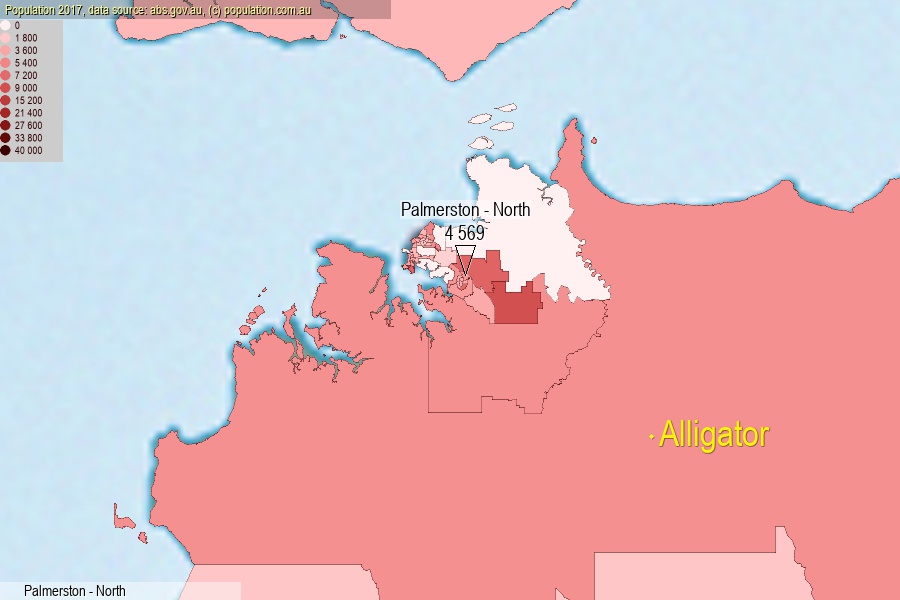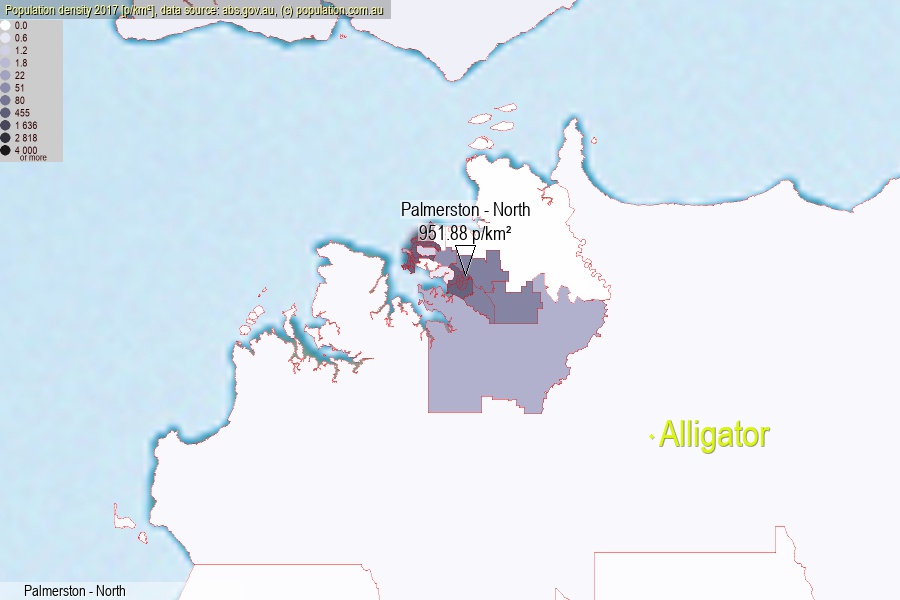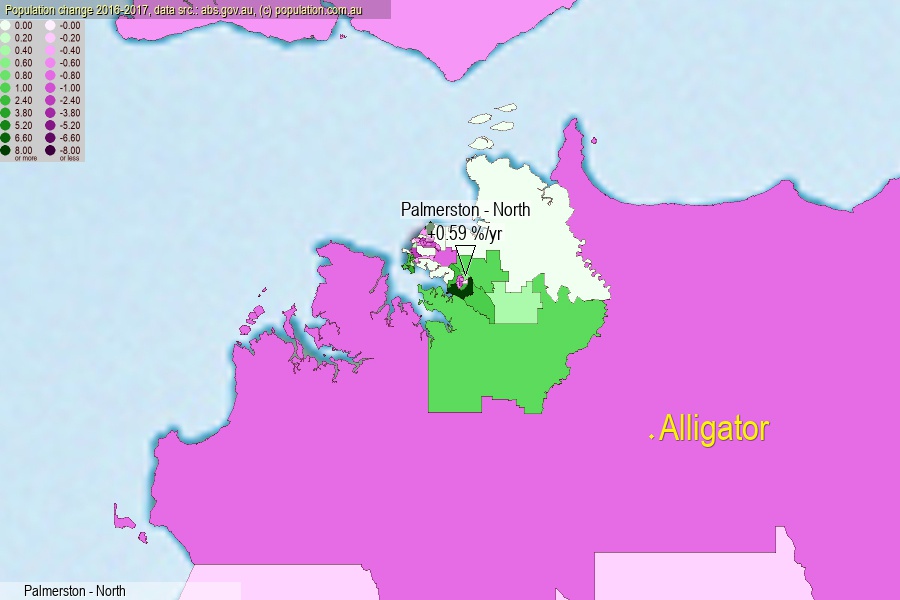 population.com.au
population.com.auLast official estimated population of Palmerston - North (as Statistical Area Level 2) was 4 569 people (on 2017-06-30)[2]. This was 0.02% of total Australian population and 1.852% of NT population. Area of Palmerston - North is 4.80 km², in this year population density was 951.88 p/km² . If population growth rate would be same as in period 2016-2017 (+0.59%/yr), Palmerston - North population in 2025 would be 4 791. [0]



Click to enlarge. Palmerston - North is located in the center of the images.
Population [people], population density [p./km²] and population change [%/year] [2]
View borders » (new window) [4]
[1991-1992] 0.00 %/Yr.
[1992-1993] +100.00 %/Yr.
[1993-1994] +48.39 %/Yr.
[1994-1995] +35.87 %/Yr.
[1995-1996] +24.80 %/Yr.
[1996-1997] +140.38 %/Yr.
[1997-1998] +62.67 %/Yr.
[1998-1999] +61.31 %/Yr.
[1999-2000] +17.78 %/Yr.
[2000-2001] +19.41 %/Yr.
[2001-2002] +34.68 %/Yr.
[2002-2003] +12.34 %/Yr.
[2003-2004] +14.28 %/Yr.
[2004-2005] +15.71 %/Yr.
[2005-2006] +13.80 %/Yr.
[2006-2007] +10.31 %/Yr.
[2007-2008] +15.13 %/Yr.
[2008-2009] +7.12 %/Yr.
[2009-2010] +1.54 %/Yr.
[2010-2011] +0.92 %/Yr.
[2011-2012] +0.89 %/Yr.
[2012-2013] +0.65 %/Yr.
[2013-2014] +0.54 %/Yr.
[2014-2015] +0.67 %/Yr.
[2015-2016] +0.60 %/Yr.
[2016-2017] +0.59 %/Yr.
[0] Calculated with linear interpolation from officially estimated population
[1] Read more about SA2 and Australian Statistical Geography Standard (ASGS) on abs.gov.au
[2] Population data from Australian Bureau of Statistics (Population and density: 2017; change: 2016-2017)
[3] Digital Boundaries: Australian Statistical Geography Standard (ASGS) 2016.
[4] Border coordinates are simplifyed using Ramer-Douglas-Peucker algorithm.